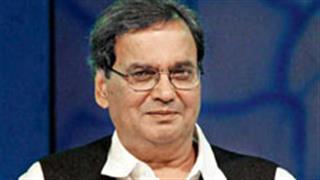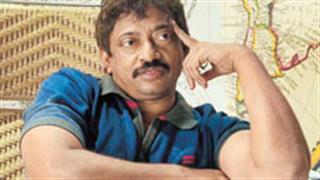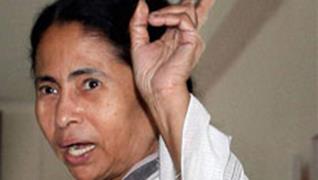Cinema is no different because it reflects life, albeit in different ways, some entertaining, some dark and depressing. Traditions linger and this too, is mirrored in our films.
But as women step out of their homes to work and earn, or earn even at home, our cinema reflects these changes in the women in them. Into the 21st century, this change has been socially and culturally significant and cinematically visible.
The most recent example that takes serious pot-shots at the patriarchal marginalization of an ordinary woman though she is a self-respecting earning person is English-Vinglish.
The film shows how the protagonist, Shashi Godbole (Sridevi) earns through her indigenous business of laddus. In the US, she gets a big ego-boost when her English teacher calls her an entrepreneur. But back home, she is made the butt of jokes because she cannot speak English fluently. Her husband has the gumption to tell her to give up her laddu business and she stares back at him and asks `why`?
Should we credit the woman director Gauri Shinde for this insight into an upwardly mobile, urban Indian family? Not really, if one looks back at Shoojit Sircar's critically acclaimed film Vicky Donor produced by John Abraham.
Ashima Roy, who the sperm- donating hero Vicky Arora falls in love with, is a no-nonsense, stiff-upper-lipped bank officer who is not easily taken in by the naïve flirting of the young man.
She submits subsequently but cannot accept the truth of his being a prolific sperm donor till can be convinced of the welfare-motive behind sperm donation!

Visual imageries have changed. Perceptions have dramatically altered. Newspaper headlines, TV grabs, ad campaigns and Bollywood - virtually every media platform has been feeding to create a very progressive and modern face of India's women workers.
The reality, unfortunately, hasn't changed much. Barely 13% of the Indian women (18 to 59 years) work. Close to nine out of 10 of these women work in the unorganized sector in difficult job environment.
Zoya Akhtar's Zindagi Na Milegi Dobara is unabashedly and brazenly a male-buddy film which she does not feel apologetic about. But the two women in the film, Laila (Katrina Kaif) and Natasha (Kalki Koechlin) are full-blooded working women.
Laila, an American Indian, studies fashion designing in London and works as a deep sea diving instructor in Spain during her vacations. Natasha is an interior designer who flies between London and India.
The film is more like a modern-day fairy tale that ends more than happily ever after but the princesses are not just beautiful Barbie dolls dressed to kill.
In Raj Kumar Gupta's No One Killed Jessica, Rani Mukherjee delivered an out-of-the-box performance as Meera Gaity, a foul-mouthed television journalist who throws out her sleeping partner and does not blink an eyelid before making statements not considered 'feminine' by normal conventions. The portrayal fetched her Filmfare Award for Best Actress.

In Yash Chopra's directorial swan song Jab Tak Hai Jaan which pairs Shahrukh Khan and Katrina Kaif for the first time on the big screen, has Anushka Sharma playing the second female lead that promises to be more interesting that the lovey-dovey leading lady's.
She plays a character named Akira who is a 21-year-old journalist who works for Discovery Channel and is fiercely ambitious in vertical mobility in her chosen profession.
One of the most interesting working women in recent Hindi cinema is the character of Gayatri (Deepika Padukone) in Siddharth Anand's Bachna Aye Haseeno where the gallivanting, playboy and irresponsible hero Raj meets more than his match in Sydney where Gayatri studies business management during the day, works in a shopping mall in the evenings and drives a taxi at night.
When he asks her how is she not afraid of driving alone in the dark, she takes out her ammunition from the car's dickey - a whip and other paraphernalia and he stares at her open-mouthed!
Not since V. Shantaram's Admi and Amar Jyoti, or J.B.H.Wadia's Hunterwali series and melodramas of the forties and fifties have there been so many strong roles for women to play on the big screen as there are today and in the past decade.
One only has to pick up the daily newspaper and scan through the entertainment guide to find a film named after its female protagonist or having the female character either on an equal footing with the male lead or without a hero to offer the cliched romantic angle.
`Women haven't travelled the distance that we typically perceive them to have covered, ` says Gautam Bhardwaj, director, Invest India Economic Foundation based on the findings of the Invest India Incomes and Savings Survey, 2007, one of the largest ever surveys done in India.
Data on women workers says the picture is not very encouraging. `Clearly what we thought was some dramatic shifts in the making (among Indian women) was not that dramatic. The survey reveals that the changes have been very incremental, ` says Santosh Desai, CEO, Future Brands.
Every new frontier that has been achieved gets written about. Every step forward - from the first woman rickshaw driver getting behind the wheels to petrol pumps being `manned` by women - gets celebrated.
The fact that celebration is a significant marker of woman's coming out of the kitchen to get to the bank to deposit her earnings is proof that we still consider the working woman to be something extra-ordinary or that she is a super woman.
The journey has been long and it has been an uphill climb. From Radha in Mother India who was forced to take up the financial responsibility of looking after her boys, to Sonbai in Ketan Mehta's Mirch Massala who worked in a chilli factory but did not balk at slapping the Subedar when he tried to get fresh with her to the Page 3 journalist in Madhur Bhandarkar's Page 3, the beautiful tongewalli in Ramesh Sippy's Sholay, the single-mother doctor in Paa, working women in Indian mainstream cinema have come a long way.
And thankfully, the gender of the filmmaker or the star portraying the woman does not make a difference.




















